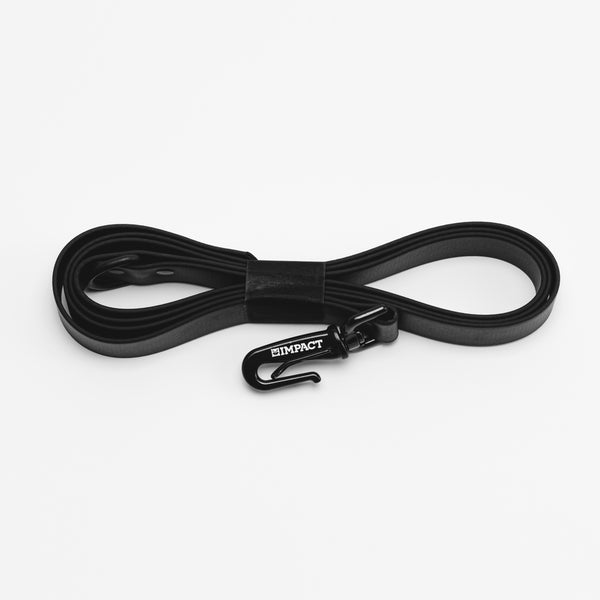Anxiety is a relatively common- yet misunderstood, condition that many dogs suffer from. When discussing anxiety and other mental health conditions, it’s common for people to assume that these problems only pertain to humans. In fact, this is far from the truth. Many animals, including canines, can suffer from various behavioral problems stemming their mental health. Among dogs in particular, anxiety is one of the most prevalent behavioral disorders. Whether a dog is experiencing minor bouts of anxiety or they have severe separation anxiety, anxiety can significantly impact your dog’s quality of life. Thus, it’s important for pet owners to understand the causes and signs of dog anxiety so they can effectively treat it.
What Causes Anxiety in Dogs?
There are numerous causes of anxiety in dogs- and it’s definitely not a “one size fits all” condition. One dog’s anxiety being attributed to specific causes does not mean that all anxiety in dogs can be attributed to these same causes. Every dog is going to be affected differently by their experiences, genetics, and environments. Furthermore, many dogs develop anxiety because of a combination of multiple different factors.
Let’s take a look at some of the most commonly studied underlying causes of dog anxiety.

Changing Environments
Perhaps one of the most widely recognized factors that influences a dog’s mental state is their environment. There is an assumption that dogs in good environments will then have good mental health, and vice versa. However, it’s not always a bad environment that causes a dog to develop anxiety; simply being exposed to new or changing environments can take a toll on your dog’s mental health and cause anxiety. Take a look at a few examples.
New home. Did you recently move to a new home before your dog started acting a little off? Well, it may be the sudden move to a new environment that’s causing them to feel stressed or anxious. When dogs are suddenly thrust into a new place, it can seem very overwhelming to them at first. Not only does this disrupt their routine, but their surroundings are completely unfamiliar to them, which can contribute to their feelings of unease.
Loud or busy surroundings. Dogs can be particularly sensitive to noise, so an environment with lots of constant or unfamiliar noises can be very triggering for them. The busier an environment is, the more likely your dog is to feel anxious or on-edge. Sometimes an external environment with loud noises can be out of your control, so fortunately there are ways to give your dog a safe space for them- which we will discuss in greater detail in a bit.
Weather changes. Extreme weather events tend to be dreaded by many pet owners, as weather changes are known to cause significant distress for dogs. Rain, tornados, and of course- thunderstorms can be the source of anxiety for many dogs, who are a lot more sensitive to weather changes than we are.
“Dogs sense barometric pressure changes much sooner than humans and because of their acute hearing, they may also be afraid of the noise,” says Julie Burgess, a Certified Professional Dog Trainer. Barometric pressure shifts ahead of extreme weather events, such as storms, which is why dogs commonly exhibit anxious behaviors in the hours leading up to a storm.
When discussing underlying causes of anxiety, Burgess says much of it can be attributed to environmental factors. Thus, pet owners should be mindful of their dog’s surroundings and do their best to limit the amount of time spent in high-stress environments.

Separation Anxiety
Separation anxiety is a more specific type of anxiety that can be very distressing for dogs- and their human counterparts. Some experts estimate between 20 and 40% of dogs suffer from separation anxiety. Unlike standard anxiety that’s caused by various external factors, separation anxiety is generally caused by abandonment. Dogs suffering from separation anxiety have an extreme fear of being separated from their owners, so their anxiety is triggered when they are alone. When looking into the underlying causes of separation anxiety, they tend to center more around the dog’s history. If a dog has been previously abandoned, rehomed, or neglected by their owners, they may be more likely to develop separation anxiety over time.
Signs of Anxiety
Oftentimes, signs of anxiety can be easily dismissed by dog owners. Afterall, it’s not uncommon for dogs to be getting into trouble or misbehaving for no reason. How many times have you just scoffed and rolled your eyes when your dog has helped themselves to your socks? So, yes, many of your dog's mischievous antics can be categorized as “dogs being dogs”. However, this is not always the case.
One of the most common reasons why dog anxiety often goes undetected is that owners either: 1) don’t know what symptoms to look out for, or 2) don’t recognize these symptoms as signs of anxiety.
In fact, up to 70% of behavioral issues in dogs can be attributed to dog anxiety.
Thus, it’s crucial for dog owners to recognize when certain behaviors are indicative of a much larger and more serious problem. When common dog anxiety symptoms are quickly labeled as no big deal, many pet owners can be completely unaware of the emotional pain their dog is in.
Anxiety typically presents in dogs through changes in their behavior. This may include excessive panting, agitation, or pacing. That being said, pet owners should be sure to look for signs of behavior that’s particularly out of character for their pup. For example, if your perfectly potty trained dog suddenly starts urinating or defecating inside, it’s likely because they’re experiencing anxiety.
Additional signs of dog anxiety may include whining, loss of appetite, self harm behaviors (such as chewing their paws), and outward aggression towards people or other dogs, according to Kim Balchios, dog behaviorist and founder of Mama Kims Animal Rescue, a platform dedicated to promoting animal welfare and supporting animal rescues worldwide.
In cases of more severe anxiety, dogs may exhibit more extreme behavioral problems that cause concern. This can even include growling and biting their owners or other dogs, explains Burgess.
“This can cause problems in a household because owners may feel they cannot keep their dog who growls, snaps, or bites,” says Burgess. “However, anxiety treated effectively and early reduces the likelihood of their dog causing more severe problems.”

The Dangers of Dog Anxiety
Another major symptom of dog anxiety is destructive behavior, something that can be very frustrating for dog owners. As Balchios explains, “anxious dogs might chew furniture, injure themselves while trying to escape, or even develop more severe behavioral issues such as aggression.”
Not only is this behavior a strong sign that your dog is in distress, but it can understandably be very draining for dog owners too. Replacing torn up furniture or destroyed household items can become quite expensive fast, causing significant financial stress.
When it comes to anxious behaviors in dogs, it’s vital that dog owners also recognize the dangers associated with these behaviors. By doing so, you can be sure to stop these problematic behaviors before they present a safety risk to your dog.
“Untreated anxiety can lead to destructive behaviors that pose risks to both the dog and the household,” shares Kim Balchios, dog behaviorist and founder of Mama Kims Animal Rescue.
Anxiety-induced destruction can be a nuisance for most dog owners. Afterall, is anyone going to be happy to come home and see their favorite pillows torn up? However, while this destructive behavior may start harmless- it does not always stay that way. Unfortunately, it’s all too common for destructive dogs to get into household hazards, such as toxic cleaning products. While tearing up pillows might not harm your dog, chewing a bottle of bleach or glass cleaner certainly could. Needless to say, it’s absolutely essential for dog owners to recognize this concerning behavior and take the appropriate action to keep their dog safe.
Treating Dog Anxiety
Once dog owners know to recognize the key signs of dog anxiety, it’s crucial that quick action is taken to treat the anxiety. If dog anxiety remains untreated, the problem is just going to get worse as “long-term anxiety can lead to health problems such as digestive issues or weakened immune responses in dogs,” says Balchios.
Exercise Them
To ensure your canine companion is happy and healthy, be sure to exercise them frequently. Physical activity not only helps to keep your dog fit, but it also provides them with mental stimulation and can improve their happiness levels. Moreover, exercise has been shown to be a tremendous asset for reducing stress or anxiety. A game of fetch or a walk around the neighborhood are simple ways you can help your dog feel mentally healthy.

Give them a Safe Space
As a dog owner, ensuring your dog is in a safe and comfortable environment is crucial, especially when treating their anxiety. While you might not be able to control every aspect of their environment, you can give them their own safe space where they can de-stress. This is where dog crates come in. A secure crate provides many mental health benefits for dogs, as it’s a comforting space where they can get away from outside triggers that may contribute to their anxiety. Not only that, but a crate provides peace of mind for dog owners, who take comfort knowing their beloved pup is safe from harm.
Many animal welfare organizations advocate for crate training and encourage dog owners to utilize create training as a powerful treatment for dog anxiety. However, it’s imperative that owners of anxious dogs understand that not all crates are equal.
While some dogs may do perfectly fine in poorly constructed wire crates, anxious dogs definitely will not. Flimsy wire or plastic crates provide very little protection for dogs, and most importantly, pose a major safety risk for anxious dogs. As we’ve discussed above, anxious dogs are more likely to exhibit destructive behavior, and a wire crate is no match for that. When anxious dogs attempt to escape wire crates, bent or dislodged wires can cause serious injuries.
Thus, dogs suffering from anxiety should only be secured in a specialized, escape-proof crate specifically designed for anxious dogs. Investing in a secure dog crate, such as the Impact High Anxiety Dog Crate, will not only benefit your pet's well-being but also yours as well.
Utilize Positive Reinforcement
Knowing your dog is suffering from anxiety can be heartbreaking. Luckily, positive reinforcement can make a big difference in managing your dog's anxiety. By rewarding your dog's good behavior with treats, praise, or affection, you're reinforcing the behavior you want to see and helping your dog feel more secure and confident. Next time your dog is in an anxiety-inducing environment, try giving them a special toy or treat to distract them and make them feel more comfortable. By consistently using positive reinforcement, you can help your dog feel more relaxed and less anxious overall.
Consult a Veterinarian
Anxiety can be extremely scary for both dogs and humans, which is why it’s always a good idea to seek professional help. Your dog’s veterinarian will be able to best help you create a targeted treatment plan specifically for your pup. Furthermore, there are frequent cases where a dog’s anxious behavior can be stemming from a medical issue, and the veterinarian will be able to properly assess your dog’s health.
“Dogs can exhibit a variety of different behaviors when they are anxious and sometimes medical issues can be mistaken for behavior problems,” says Burgess. “This is the prime reason I always recommend a visit to your veterinarian to rule out a medical problem first.”
Read more about dog anxiety and ways you can ensure your dog's health here.





